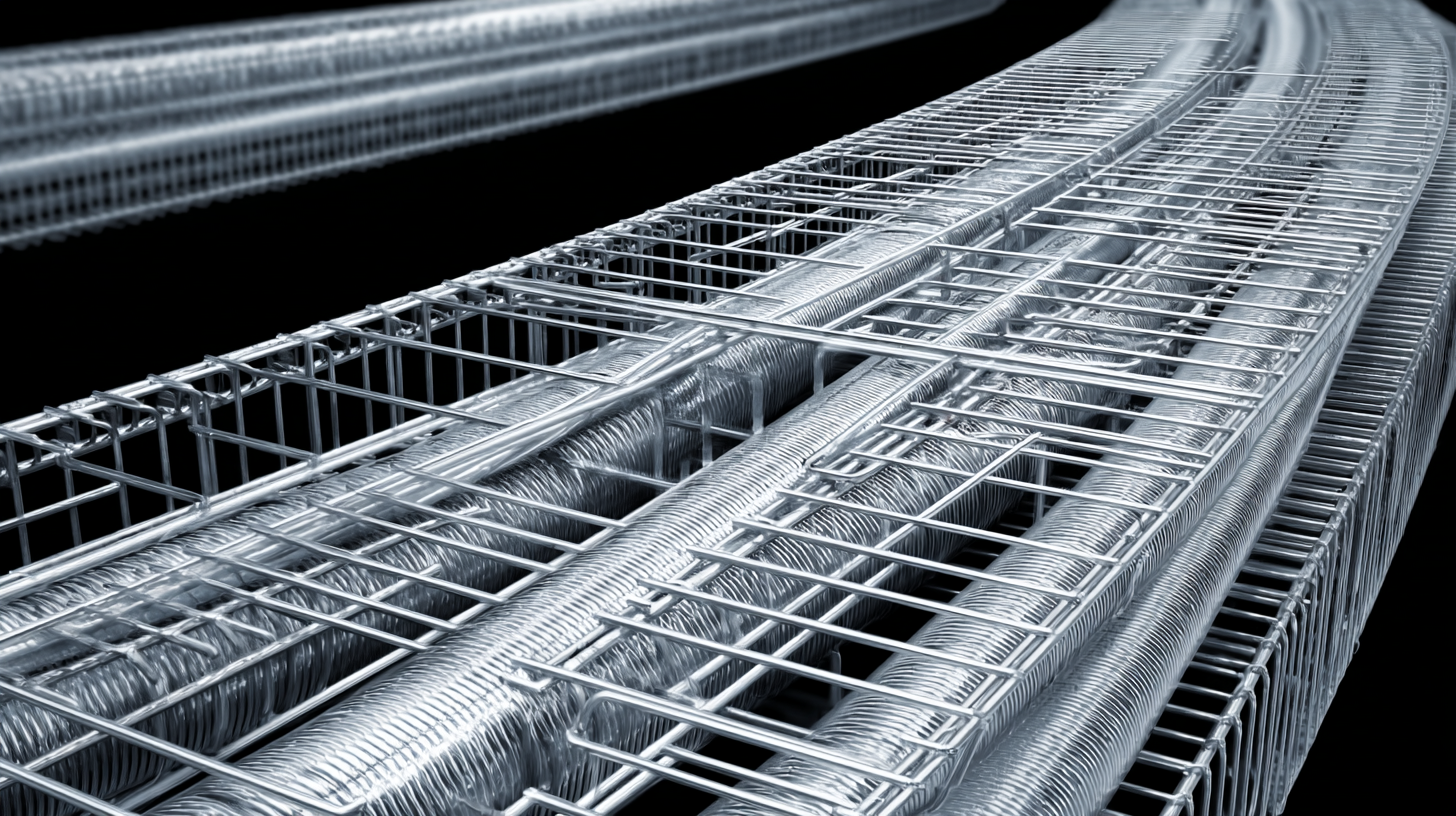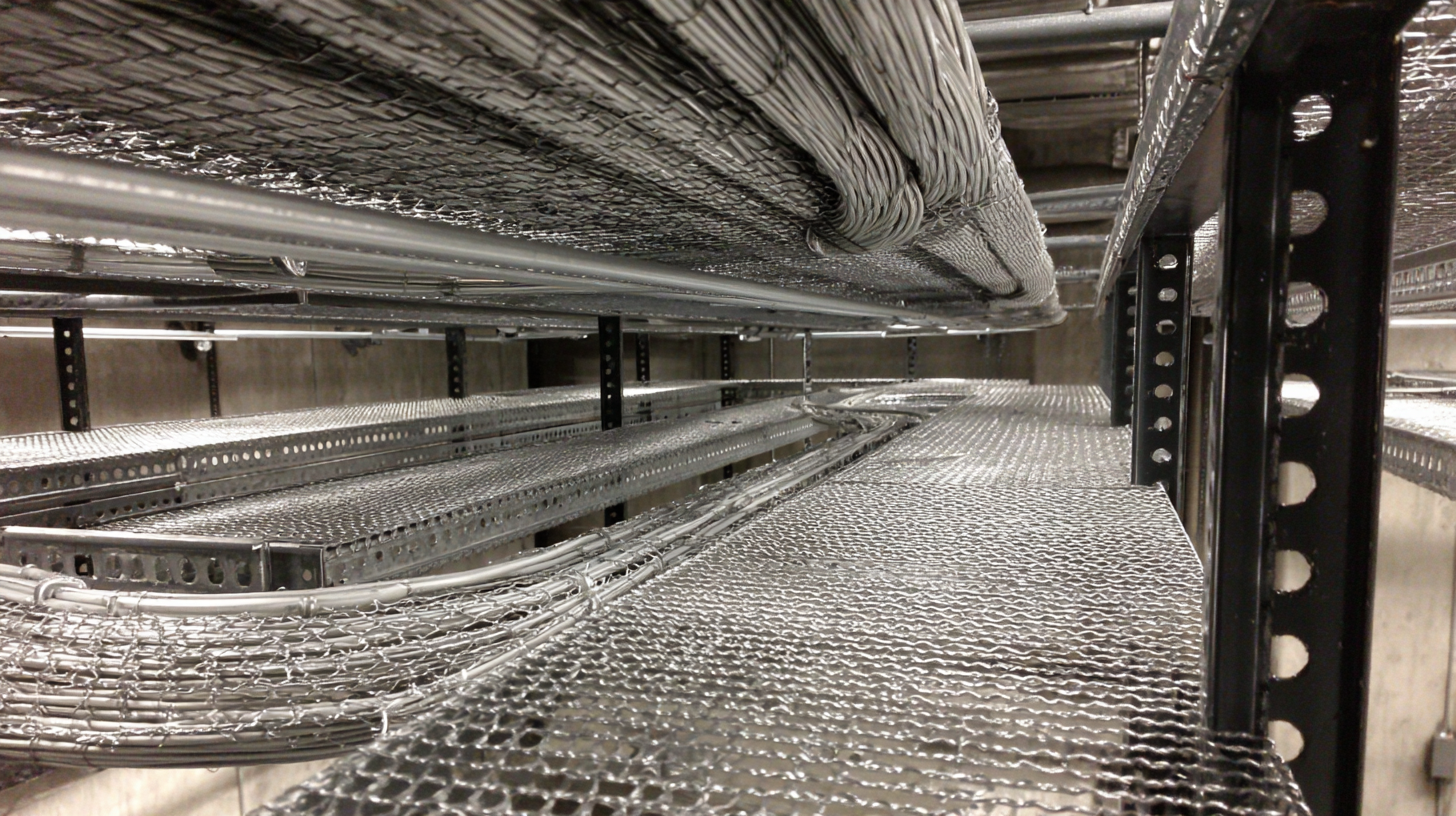Blog
- Home
- Blog
10 Best Wire Mesh Cable Tray Solutions for Efficient Cable Management
In today's rapidly evolving technological landscape, effective cable management has never been more crucial. As businesses and industries increasingly rely on complex networks of electrical and data cables, the demand for versatile and efficient solutions is at an all-time high. One standout option is the wire mesh cable tray, which provides an innovative way to organize and support cables while ensuring proper airflow and reducing heat accumulation. This type of tray not only enhances the aesthetic of a workspace but also promotes safety by minimizing the risk of tripping hazards and cable damage.
In this comprehensive guide, we will explore the 10 best wire mesh cable tray solutions available in the market. Each option will be evaluated based on its design, functionality, and suitability for different applications. Whether you are seeking to streamline operations in a commercial environment or improve home networking setups, these wire mesh cable trays offer a blend of practicality and style. Furthermore, we will include tips on selecting the right tray for your needs, installation best practices, and maintenance recommendations, ensuring you make the most informed decision possible. Join us as we delve into the world of wire mesh cable trays and discover how they can transform your cable management strategy.

Top Features to Look for in Wire Mesh Cable Trays
When selecting wire mesh cable trays for efficient cable management, there are several key features to consider. Firstly, the material quality is crucial; look for trays made from durable materials such as steel or aluminum, which offer resistance to corrosion and environmental wear. Additionally, a good tray should have a sufficient load capacity to support the cables, ensuring that they do not sag or become damaged over time. The design should also facilitate proper ventilation, reducing the risk of overheating, especially in systems with high cable density.
Another important aspect is the tray's compatibility with various cable types and sizes. Adjustable components or modular designs can enhance flexibility, allowing for easy modifications and expansions as needs change. Furthermore, consider the ease of installation and maintenance. Features like lightweight construction and user-friendly mounting options can significantly reduce installation time, while removable covers or access points can simplify ongoing maintenance. Prioritizing these features will help create a more efficient and reliable cable management system using wire mesh cable trays.

Benefits of Using Wire Mesh Cable Trays for Cable Management
Wire mesh cable trays have become an essential solution in modern cable management systems, offering numerous benefits for both industrial and home environments. Their ability to provide excellent ventilation minimizes the risk of overheating, particularly important in data centers where fiber management is crucial. As the cable tray market is projected to reach USD 5.4 billion by 2035, with a steady CAGR of 2.4% from 2025, the increasing reliance on organized cable systems reflects their importance in managing the complexity of electrical installations.
Moreover, wire mesh trays are celebrated for their adaptability and ease of installation. Unlike their solid counterparts, they allow for quick adjustments and expansions as needs evolve, promoting efficient use of space. In game rooms, for example, innovative cable organizers are transforming chaos into control, ensuring that multiple cords can be bundled neatly and discreetly. By adopting wire mesh cable trays, users not only enhance aesthetics and accessibility but also contribute to a safer environment by reducing the hazards associated with tangled wires, thereby streamlining maintenance efforts in the long run.
Comparative Analysis: Wire Mesh vs. Solid Cable Trays
When considering cable management solutions, the choice between wire mesh and solid cable trays is essential to optimize performance. Wire mesh cable trays are designed to provide excellent airflow, making them ideal for environments where heat dissipation is crucial. They are typically made of steel, aluminum, or stainless steel, and their open design allows for easy installation and maintenance of cables. Conversely, solid cable trays offer better protection for cables from external elements and are beneficial in areas where dust and debris are a concern.
**Tips:** When choosing between wire mesh and solid trays, consider the specific needs of your installation site. If heat accumulation is a problem, opt for wire mesh trays to enhance airflow. However, if your workspace is prone to contaminants, solid trays may offer the required protection. Moreover, assess the weight and type of cables you will be utilizing, as this can influence your choice of material and design for optimal support and management.
In today's market, the cable tray segment is increasingly influenced by the ongoing impacts of COVID-19, which have accelerated the demand for efficient cable management solutions across various industries. As businesses adapt to new operational challenges, understanding the material composition and benefits of the various tray types can guide professionals in making informed decisions that cater to their unique requirements.
10 Best Wire Mesh Cable Tray Solutions for Efficient Cable Management
| Cable Tray Type | Material | Load Capacity (lbs) | Weight (lbs/ft) | Installation Ease (1-5) | Cost ($/ft) |
|---|---|---|---|---|---|
| Wire Mesh Tray | Steel | 200 | 1.5 | 4 | 10 |
| Solid Bottom Tray | Aluminum | 300 | 2.0 | 3 | 15 |
| Wire Mesh with Cover | Galvanized Steel | 250 | 1.75 | 4 | 12 |
| Open Wire Tray | Stainless Steel | 180 | 1.2 | 5 | 18 |
| Heavy Duty Mesh Tray | Mild Steel | 500 | 2.5 | 3 | 20 |
| Compact Solid Tray | Polymer | 150 | 0.8 | 4 | 8 |
Installation Tips for Wire Mesh Cable Trays in Various Environments
When considering the installation of wire mesh cable trays, it's essential to adapt to different environments for optimal performance. In industrial settings where heavy machinery operates, ensure the trays are mounted securely to withstand vibrations and impacts. Utilizing brackets and anchors appropriate for the surface material can enhance stability and safety. In contrast, offices and commercial spaces may benefit from aesthetically pleasing installations that integrate seamlessly with interior designs while providing effective cable management.
Another tip for installation involves planning the layout meticulously. Assess the cable types and volume that will run through the trays to avoid overcrowding, which can lead to overheating and reduced performance. Incorporate proper grounding and bonding techniques to prevent electromagnetic interference, particularly in areas with sensitive electronic equipment. Regular inspections and maintenance of the cable trays can help detect wear and ensure the longevity and safety of the installed system, preventing costly downtimes in the future.

Maintenance Best Practices for Long-Lasting Cable Tray Solutions
To ensure the longevity and efficiency of wire mesh cable tray systems, implementing proper maintenance practices is crucial. Regular inspections should be conducted to identify signs of wear, corrosion, or other forms of damage. This proactive approach not only helps in maintaining the structural integrity of the trays but also prevents potential disruptions in cable management. Additionally, any debris or dust accumulation within the trays should be promptly cleared to facilitate unhindered airflow and reduce overheating risks.
Another vital aspect of maintenance is ensuring secure connections and fixing loose components. Ensuring that the cable ties and supports are intact prevents sagging and promotes a tidy layout. Lubrication of moving parts, when applicable, can also enhance the operational efficiency of the cable management system. By adhering to these maintenance best practices, organizations can extend the lifespan of their wire mesh cable trays and ensure a safe, organized environment for their electrical and data cables.
10 Best Wire Mesh Cable Tray Solutions for Efficient Cable Management
This bar chart illustrates the effectiveness of various wire mesh cable tray solutions based on their durability and maintenance ease. The data reflects the average ratings given by users on a scale of 1 to 10.
Related Posts
-

Maximizing Safety and Efficiency: The Essential Guide to Choosing the Right Cable Trunking Solutions
-

Understanding the Benefits of Cable Tray Systems for Modern Electrical Installations
-

Evaluating the Benefits of Welded Wire Mesh Fence Against Traditional Fencing Solutions
-

What is the Process of Installing Welded Wire Fence
-

Why Choosing Welded Wire Mesh Fence Can Enhance Your Property Security
-

Future Trends in Best Cable Mesh Market Analysis by 2025 with Real World Examples
